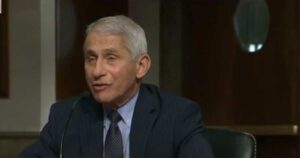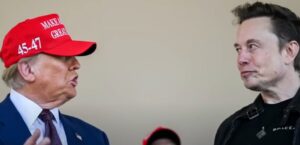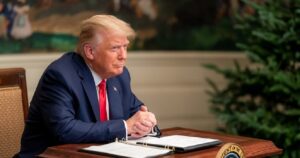Trump’s new executive order empowers cities to clear the homeless from the streets
Brace yourselves, folks—President Donald Trump is swinging a heavy policy hammer to tackle the homelessness crisis with a bold new executive order signed Thursday afternoon.
This order, dubbed "Ending Vagrancy and Restoring," falls under Trump’s broader "Make America Safe Again" campaign, aiming to let cities and states remove homeless individuals from public spaces and guide them into treatment facilities while redirecting federal funds and prioritizing grants for tough-on-crime jurisdictions.
Let’s start with the hard numbers: a staggering 274,224 people were counted living on U.S. streets on a single night during the final year of the prior administration, the highest ever recorded. That’s not just a statistic; it’s a glaring signal that something’s been broken for far too long. And with an 18% spike in homelessness from 2023 to 2024, per the latest Housing and Urban Development report, it’s clear the old playbook isn’t working.
Trump’s Plan to Clean Up Cities
Trump’s latest move isn’t just talk—it’s action, signed into law on Thursday with a clear directive. The order empowers Attorney General Pam Bondi to push back against judicial rulings and consent decrees that have tied the hands of local governments, preventing them from clearing streets and moving folks into care.
Now, let’s be real: not everyone’s going to cheer this. Some will cry “heartless,” but isn’t it more heartless to let people languish in dangerous conditions when treatment centers could offer a lifeline? Turns out, ignoring a problem doesn’t make it vanish.
Beyond legal muscle, the order shifts federal funds—though the exact amount remains murky—to ensure those removed from streets aren’t just displaced but directed to rehabilitation and other support facilities. It’s a pragmatic pivot, focusing on solutions rather than endless hand-wringing.
Federal Collaboration and Strict Grant Rules
Trump’s plan also ropes in top federal players for a united front. Attorney General Bondi must team up with Health and Human Services Secretary Robert F. Kennedy Jr., Housing and Urban Development Secretary Scott Turner, and Transportation Secretary Sean Duffy to steer federal grants toward cities and states that mean business.
And what does “mean business” look like? Jurisdictions must crack down on open drug use, urban camping, loitering, squatting, and keep tabs on sex offenders to get priority for these grants. It’s a no-nonsense stance that says public safety isn’t negotiable.
Here’s the kicker: discretionary grants for substance-use disorder programs won’t fund drug injection sites or support illicit drug use. Call it tough love, but enabling destructive behavior under the guise of “harm reduction” has never sat right with those who value accountability.
Restoring Safety in the Capital and Beyond
Trump has long set his sights on cleaning up American cities, with a particular focus on Washington, D.C. He’s made no secret of his frustration with the state of the nation’s capital, and this order feels like a direct jab at that mess.
Back in March, Trump declared, “We're going to have a crime-free capital.” He painted a vision of a D.C. where visitors aren’t dodging danger at every corner, promising it’ll be “cleaner and better and safer than it ever was.”
Well, that’s a tall order, Mr. President, but it’s hard to argue with the goal. If progressive policies have left streets more dangerous and disordered, isn’t it time to try something different? Hope isn’t a strategy, but action just might be.
A Conservative Push With Empathy in Mind
This executive order isn’t about punishing the downtrodden—it’s about restoring order while offering a path forward. Critics will likely frame it as cold, but leaving people to suffer on sidewalks under the banner of “freedom” feels like the real cruelty.
Trump’s approach, while firm, ties funding to treatment and rehabilitation, not just sweeps with nowhere to go. It’s a nod to the idea that public spaces belong to everyone, not just those who’ve fallen through the cracks, while still aiming to help those in need.
So, will this work? Time will tell, but one thing’s certain: doing nothing hasn’t. Let’s hope this order sparks real change, not just headlines, because America’s streets—and its people—deserve better than the status quo.




